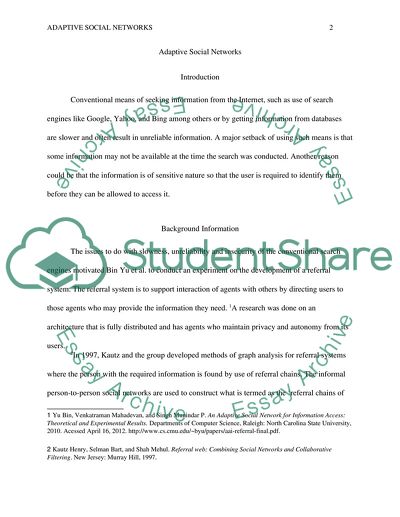Cite this document
(“Adaptive Social Networks Research Paper Example | Topics and Well Written Essays - 1000 words”, n.d.)
Adaptive Social Networks Research Paper Example | Topics and Well Written Essays - 1000 words. Retrieved from https://studentshare.org/information-technology/1594016-adaptive-social-networks
Adaptive Social Networks Research Paper Example | Topics and Well Written Essays - 1000 words. Retrieved from https://studentshare.org/information-technology/1594016-adaptive-social-networks
(Adaptive Social Networks Research Paper Example | Topics and Well Written Essays - 1000 Words)
Adaptive Social Networks Research Paper Example | Topics and Well Written Essays - 1000 Words. https://studentshare.org/information-technology/1594016-adaptive-social-networks.
Adaptive Social Networks Research Paper Example | Topics and Well Written Essays - 1000 Words. https://studentshare.org/information-technology/1594016-adaptive-social-networks.
“Adaptive Social Networks Research Paper Example | Topics and Well Written Essays - 1000 Words”, n.d. https://studentshare.org/information-technology/1594016-adaptive-social-networks.


